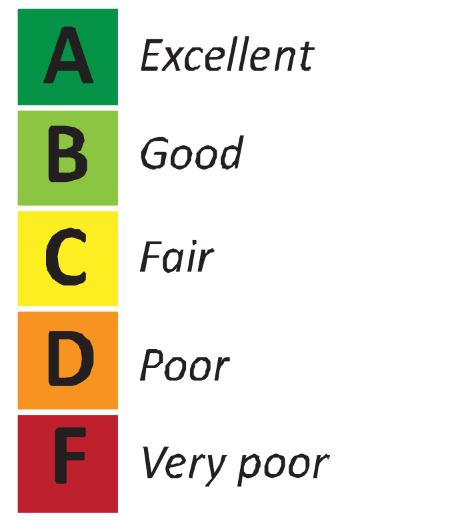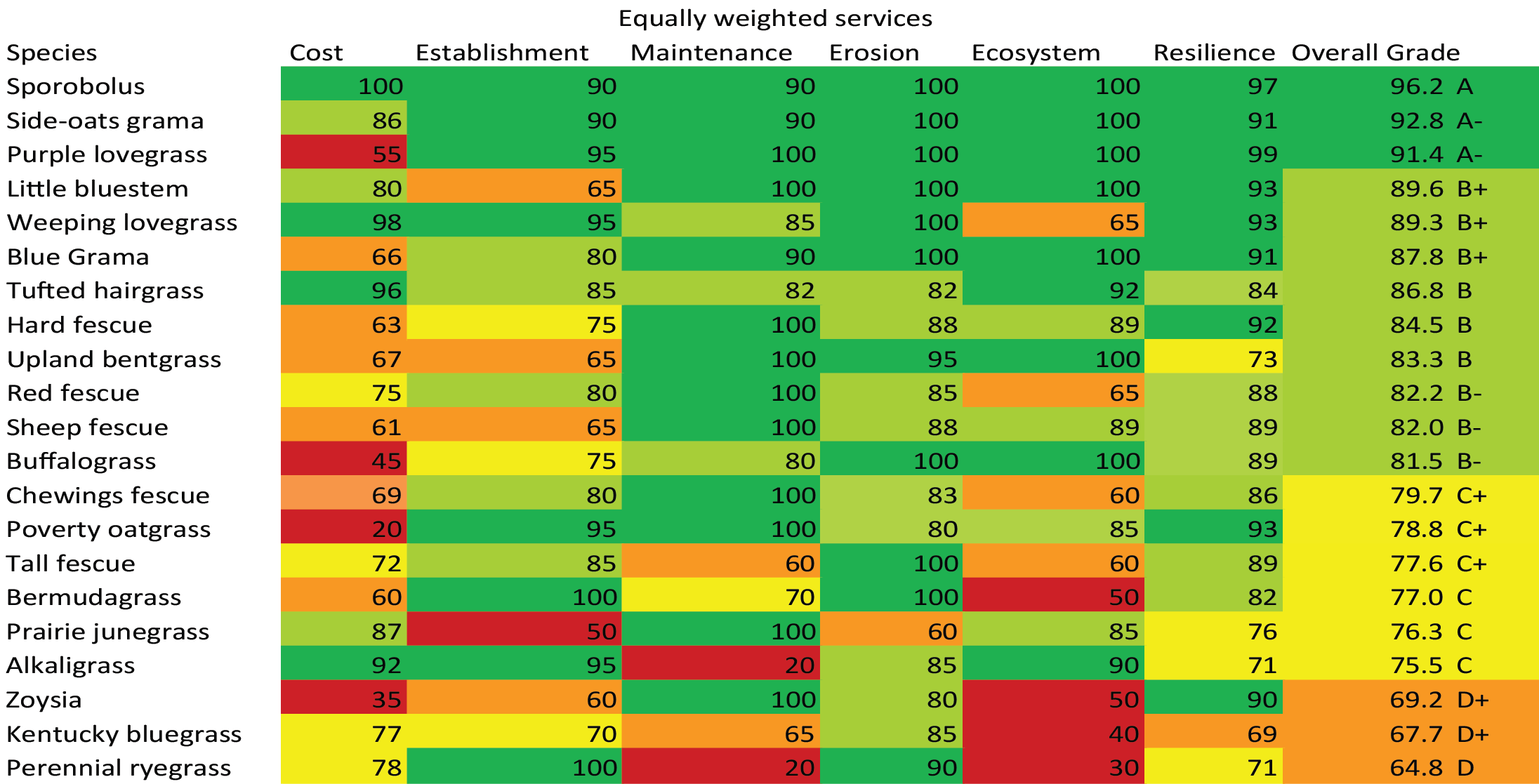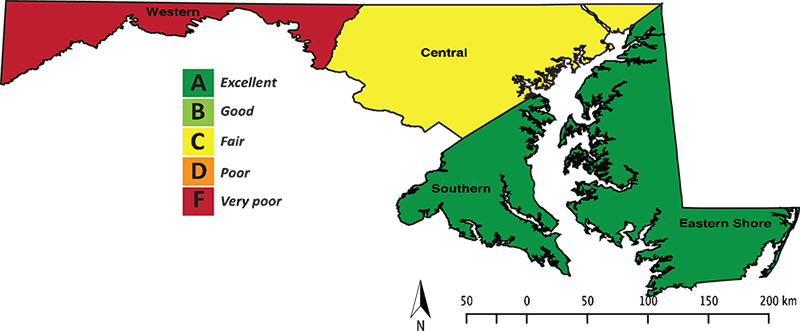Background
Turfgrasses are widely used as vegetative ground cover to reduce soil erosion, filter runoff, improve air quality, provide food resources and habitat to native fauna, and to provide surfaces for recreation and aesthetic appeal.
The State Highway Administration (SHA) of Maryland maintains turfgrasses along highway right-of-ways to prevent erosion, maintain a safety zone for stopped vehicles, and improve aesthetics for motorists. However, the turfgrass seed mixtures currently used in Maryland require frequent mowing in often narrow and congested areas. Thus, maintenance of roadsides can continue to be costly and can place maintenance staff in danger.
These issues highlight the need to identify turfgrasses and seed mixtures that require less maintenance but that will establish rapidly, be resilient to the harsh roadside environment, have neutral or positive effects on ecosystems and watersheds, and are available and affordable through commercial growers.
For this work, we reviewed grass species to recommend for use along roadsides in Maryland, paying particular attention to commercial cost, rate of establishment, ease of maintenance, potential for erosion control, ecosystem benefits, and resilience.
Methods
We focused on six evaluation criteria for each species of turfgrass and performed an extensive literature review of over 500 journal articles, white papers reports, fact sheets, and detailed discusstions with turfgrass experts. We first considered 104 commercially available grass species and then used a trait-based approach to select a subset of species for evaluation.
We graded 25 turfgrass species and species groups based on their ability to provide six services to roadside management and to be resilient towards the stressful conditions that are frequently encountered along roadsides:
- Commerical Availability and Cost

- Rate of Establishment
- Ease of Maintenance
- Potential for Erosion Control
- Ecosystem Benefits
- Resilience
Each species was reviewed for six economic and ecological servies and then given an overall grade (A=Excellent, B=Good, C=Fair, D=Poor, and F=Very Poor).
Results
Within the six services that were evaluated, the resilience service includes 7 traits that together provide an overall resilience rating:
- Drought and Heat Tolerance
- Tolerance to Low Fertility Soils
- Cold and Freezing Tolerance
- Salinity Tolerance
- Tolerance to Acid Soils
- Wear Tolerance
- Tolerance to Competition
For each species, grading wheels like the one shown at right were developed for Ecosystem Services (top) and Resiliency (bottom).
Click to learn more about each grading category.
We recommended that grass species consistently receiving an overall B grade or higher as suitable for planting along Maryland roadsides, which resulted in the recommendation of 9 species of turfgrasses as suitable as long as management challenges, which will vary among species and site conditions, are carefully considered. Five of those are highly suitable under a variety of management situations and an additional 4 species are suitable under more restricted conditions. These 9 species include: Sporobolus, Side-oats grama, Purple lovegrass, Little bluestem, Weeping lovegrass, Blue grama, Tufted hairgrass, Hard fescue, and Red fescue.
A summary of the overall grade for each species is presented in the following table:

We also recommended that some species that are currently planted frequently along roadsides only be used in limited quanitites. For example, although frequently seeded along Maryland roadsides owing to its vigorous growth and resilience, tall fescue received a grade below the B that we recommend for consideration. Although seed cost per pound is low, the recommended seeding rate is high, resulting in a cost per acre that is higher than 50% of the assessed species. Furthermore, this species has high maintenance costs and poor ecosystem benefits. Yet tall fescue does have excellent mowing tolerance and can withstand the stringent mowing regime applied by highway management.
Other species that are not recommended for roadsides but are currently used in Maryland seed mixes include Kentucky bluegrass and perennial ryegrass. Other assessed grass species not recommended for roadsides include alkaligrass, bermudagrass, buffalograss, poverty oatgrass, prairie junegrass, and zoysia.
Because the geography of Maryland is diverse, ranging from coastal to mountain habitats that can vary considerably in climate and soil conditions, we also assesed the suitability to grow in four regions of Maryland - Southern Maryland, Eastern Shore, Central Maryland, and Western Maryland.

Individual Species Summaries
- Alkaligrass
- Bermudagrass
- Blue grama
- Buffalograss
- Chewings fescue
- Hard fescue
- Kentucky bluegrass
- Little bluestem
- Perennial ryegrass
- Poverty oatgrass
- Prairie junegrass
- Purple lovegrass
- Red fescue
- Sheep fescue
- Side-oats grama
- Sporobolus
- Tall Fescue
- Tufted hairgrass
- Upland bentgrass
- Weeping lovegrass
- Zoysia
Next Steps
The next phase of our work will involve field experiments in three locations in Maryland to test the efficacy of using alternative grass species along roadsides that will require less maintenance and have the potential to survive better than traditionally used species. Locations have been selected to span the significant climate gradient in Maryland ranging from the hot Eastern Shore to the cooloer climate of the western Appalachian Mountains. Treatments will include an unplanted control as well as a treatment representing the traditional seed mix used along roadsides. Other treatments will include:
- Tall fescue cultivars 4th Millenium SRP, Titanium 2LS, Traverse 2SRP, and Mustang 4
- Hard fescue cultivars Beacon, Gotham, Spartan II, and Sword
- Sand dropseed
- Side-oats grama
- Purple lovegrass
- Five-species fescue mix: tall, hard, red, chewings, and sheep fescue
- Five-species native mix: sand dropseed, purple lovegrass, little bluestem, upland bentgrass, tufted hairgrass
- Five-species risky mix: side-oats grama, blue grama, buffalograss, poverty oatgrass, alkaligrass
- Fescue mix with clovers and wildflowers
- Native mix with clovers and wildflowers
All treatments will be replicated three times per site and monitored for survival and growth over 3 years from 2017 to 2019.

